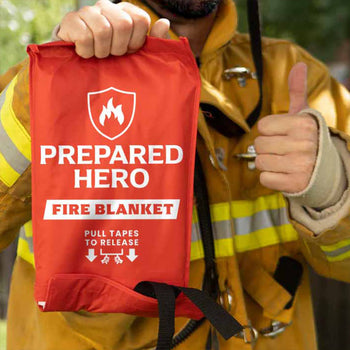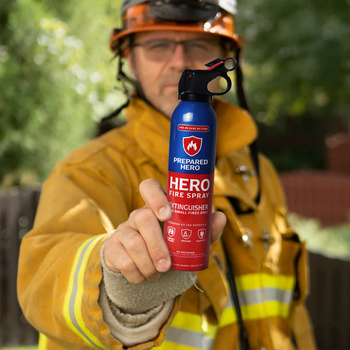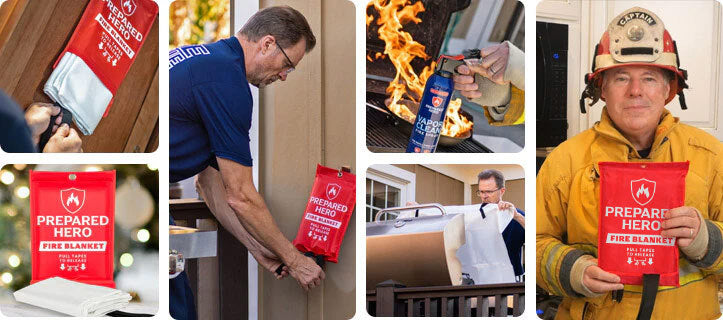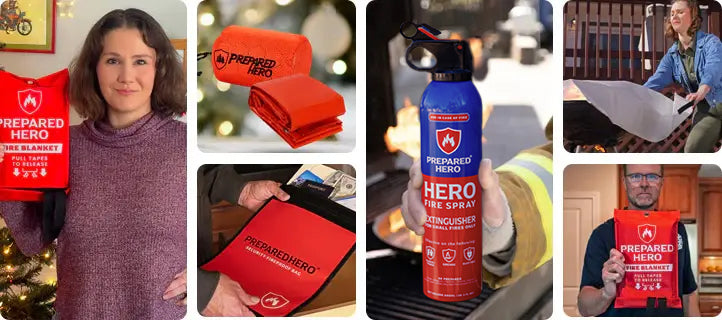Where you put your smoke detectors matters just as much as installing them. Proper placement makes sure they can detect...
According to the National Fire Protection Association (NFPA), home structure fires cause an estimated $7.6 billion in property damage each year.
A fire can be a traumatic experience, and the thought of having a burned-down house can be devastating. But at the end of the day, we’d rather have a burned-down house than lose our loved ones or employees.
Fortunately, fire damage restoration helps. But how exactly does it work? How long does it take? How much does it cost? This guide covers everything you need to know about fire damage restoration so you can make an informed decision if your property gets damaged by fire.
What Is Fire Damage Restoration?

Fire damage restoration is the process of restoring a property to its condition before a fire. The process usually includes evaluating the damage, securing the property, and putting it back to its original state.
It is a part of the larger disaster restoration effort that includes smoke damage restoration, water damage restoration, and mold damage restoration. The process involves removing and repairing the parts of a structure damaged by a fire and other damages indirectly related to it.
Fire damage restoration may take longer than other disaster restorations. It can take weeks or months to complete because it includes more steps than sole water damage restoration and mold damage restoration. Plus, a fire damage restoration can include the said processes if the water used to put out the structure fire caused damage. For instance, fire damage restoration professionals may have to replace dry walls or wires damaged by water.
Water can further damage a structure, whether the fire is caused by human error (e.g., leaving the oven unattended) or a natural disaster (e.g., flood and earthquake). From there, firefighters have to put it out using large hoses with pressurized water. The strong pressure can further damage the property and/or reveal problems that must be fixed.
How Long Does Fire Damage Restoration Take?

Fixing a property damaged by a fire can be long and complicated. The exact duration of fire damage restoration depends on several factors, including the damage, size of the property, and immediate actions taken after the fire.
For instance, significant water, smoke, and mold damage can take longer than water damage alone. Cleaning up after a mansion fire also takes longer than a regular house fire.
Remember, a minor incident may take a few weeks to resolve, while severe cases can take months. Plus, all fire restoration service providers have their own techniques for restoring a structure.
If you’ve chosen a fire damage restoration company, ask them to give you a detailed assessment. They usually outline what needs repairs and safety concerns that could delay the restoration. Doing this gives you a better idea of how long it’ll take to fix everything after a fire.
Types of Damage Fire Cause

Fire causes various damages, but flames and heat do not cause some of them. The aftermath of a fire is a complex mix of fire, smoke, water, and mold damage. Here’s a detailed look at the types of damage fires cause:
Fire Damage
Flames cause the most immediate and visible damage after a structure fire. The extreme heat and intensity of the fire consume flammable items like curtains, furniture, and appliances. Wood structures turn to ashes, and plastic items melt and distort beyond recognition.
Smoke Damage
Damages from a structure fire aren’t limited to what burned. Smoke damage also occurs, although often unnoticed. But it can be just as harmful as fire damage, if not more so.
As the fire burns, it releases smoke particles that settle on every surface and further damage the structure. Structure fire smoke also contains toxic chemicals like carbon monoxide, hydrogen cyanide, ammonia, and sulfur dioxide. Exposure to these chemicals can lead to health problems like skin or eye irritation, chest pain, shortness of breath, and other respiratory issues.
Water Damage
Firefighters use a lot of water to put out a structure fire. This can lead to another form of damage. You see, water can destroy porous materials like wood and drywall. These materials will be destroyed once they absorb too much water.
For instance, water-soaked floors weaken over time, while the wall supports sag when exposed to moisture for a long time. These issues can affect the structure’s integrity, which requires professional fixes.
Mold Damage
Mold grows when the water used to put out the fire isn’t properly cleaned up and dried. This is a silent but alarming form of damage with serious implications for your property and health.
Mold thrives in damp places and can spread fast to water-damaged areas. From a health perspective, mold exposure can result in headaches, coughing, shortness of breath, nausea, vomiting, and abdominal pain. This hidden menace can take over your home quickly, so have your house cleaned as soon as possible.
How to Prevent Fire Damage

Your home carries beautiful memories with your loved ones, which makes the thought of losing it more terrifying. Don’t take chances, and keep everyone safe by preventing fire damage. Check out how to prevent fire damage below.
1. Never leave your kitchen unattended whilst cooking.
According to the Department of Homeland Security, a small flame can turn into a huge fire in less than 30 seconds. Plus, unattended cooking is the top cause of home fires. Always focus on what you’re cooking. If you need to leave the kitchen, ask someone else to take your place or turn everything off until you get back.
2. Check your heating sources.
Heat is an element of the fire triangle, so house fires can’t occur without it. However, we can’t survive without heating sources like stoves and space heaters.
Make it a habit to check your heating sources at least once a month. Then, have them checked by a professional at least once a year. Check out how to prevent heating appliances from causing fires here. Lastly, don’t put flammable items like magazines, curtains, and candles near heat sources because they can spontaneously burn combust.
3. Practice electrical safety.
Electrical fire safety practices like avoiding overloaded outlets, replacing damaged cords, and fixing exposed wires can save lives.
Overloaded outlets draw more current than recommended, causing overheating. The excess heat can burn the insulation and ignite surrounding materials, leading to an electrical fire. In addition, damaged power cords can short-circuit and spark. Similarly, exposed wires can produce sparks and burn nearby flammable items.
4. Store flammable liquids and gases properly.
Cleaning products, paint, hair sprays, and the like can start a fire if stored near heat sources. Always store your flammable liquids and gases in a well-ventilated area away from heat. Don’t store these items where your children and pets can reach them. They’re naturally curious, so they might knock them over or play with them.
5. Be cautious with open flames.
It’s nice lighting up some candles or your fireplace for a romantic or relaxing atmosphere. On the downside, open flames are dangerous. If you ask us, it’s better to avoid them. However, we can’t just tell you to stop, especially if you love them.
If you want to light candles or use your fireplace, go ahead. Just follow candle usage and fireplace safety measures, like blowing out the flames before going to bed and using a fireplace screen. Outdoor fires are not safe either, so make sure you know how to put out fire pits properly.
6. Keep a fire spray, blanket, or extinguisher around.
Fire blankets, fire sprays, and fire extinguishers are your best defenses against home fires. Every family member should know how to use them so they can put out a small fire as soon as possible. Remember, there’s nothing more devastating than losing your loved ones to a house fire. After all, lives are more precious than material things, and you owe it to your loved ones to protect them.
What Items Can You Save From a House Fire?

You can save some items from a house fire, including those made of glass and metal. While they can survive fires, not all do, especially when the fire is huge. Let’s take a look at them in detail below:
Glass
Fire-resistant glass can withstand extremely high temperatures, so fire can’t easily damage it. They also don’t absorb water or chemicals used to put out the fire. In addition, you can easily remove soot from them. On the other hand, conventional glass objects can easily break under extreme heat. For instance, that thin glass vase you got from the dollar store will break during a house fire.
Metal
Metal objects can withstand extremely high temperatures that most house fires don’t reach. They also don’t absorb water and chemicals easily. You can easily remove soot stains from metal using dishwashing soap and vinegar. However, how much heat metal objects can withstand depends on the type of metal used.
For instance, gold and silver have high melting points―1,962°F (1,072°C) and 1,778°F (970°C), respectively. This means that objects made of them, like jewelry and coins, can survive an average house fire.
Steel tools and iron cookware also stand a good chance of surviving a normal house fire. Iron and steel melt at 2,800 °F (1,372°C) and 2,500°F (1,372°C), respectively. On the other hand, thin baking sheets and wire racks won’t survive a house fire because they’re made of cheap metal.
Hardwood
Hardwood can survive a house fire if treated with chemicals that prevent flame, smoke, and water from reaching its pores. Common fire-retardants for wood include phosphoric acid, ammonium sulfate, and melamine. For instance, you can save fire-retardant hardwood floors by cleaning them with dishwashing soap after a fire. Once done, you can sand and refinish it.
Fabric
In general, fabrics that don’t burn during a house fire can be saved because they’re easy to wash. These include curtains, clothes, bed sheets, and furniture covers. Simply toss them into the washing machine and pour a cup of bleach and five to seven tablespoons of trisodium phosphate into the mix. If they’re not exposed to fire for long, use a cup of baking soda and a cup of vinegar instead. Fabric conditioner is optional. Remember to completely dry the fabrics before using or storing them to prevent mold growth.
What Is the Best Way to Clean Fire Damage?

You have two options for cleaning up after a fire: doing it yourself (DIY) or hiring somebody else. Both options have advantages, and the best choice depends on your needs and the extent of the damage. Let’s explore the two options below:
DIY Cleaning
Going the DIY route can save you money and lets you control the cleanup.
Cleaning minor damage, like some soot on the walls or smoke odors, doesn’t usually take long. You can also clean at your own pace and use cleaning supplies readily available at home. Plus, some find it therapeutic to clean and restore their space.
However, DIY cleaning has its downsides. If the fire affected your house’s structure, hidden problems need experts. Plus, cleaning up soot and smoke can be tricky and time-consuming if the fire damages your whole house. Your palace might also end up with lingering odors or stains that basic cleaning products can’t remove.
Hiring Professionals
Hiring professionals comes with advantages. For one, fire damage restoration experts are trained and have the right tools. They also know the best methods to remove soot and smoke and can handle toxic materials safely. Plus, they have specialized cleaning agents you can’t find anywhere else.
In addition, professionals can save you time and energy. Fire damage restoration can be labor-intensive, so cleaning your house can be overwhelming. Professionals can complete the job faster and more thoroughly, which gets your house back on its feet in no time.
Which Option Is the Best?

If you’re torn between doing it yourself or asking for professional help, consider the severity of the damage, how much you can afford, and what you want to happen. If it’s minor and you feel confident in your cleaning skills, go for it. But if you’re dealing with extensive structural damage or don’t have the time or energy to clean, calling in the pros is the better choice. At the end of the day, it’s up to you to decide what works best.
How to Clean Up After Fire Damage

Dealing with a home fire can be stressful and time-consuming. Cleaning up can feel overwhelming at first, but taking it step by step makes it manageable. Here’s how to clean up after fire damage:
1. Open the windows and doors.
First things first: open the windows and doors. Doing this increases airflow and helps remove the smell of chemicals and smoke. Then, wait for a few hours to make sure that your house has enough ventilation before cleaning.
2. Get rid of debris carefully.
Fire debris and ash contain harmful chemicals, including asbestos, mercury, and lead. Ash can also irritate your skin and eyes or trigger asthma and other respiratory issues. So, wear long-sleeved shirts, fire protection gloves, eyewear, and long pants when handling debris and ash.
Don’t forget to use a fitted N95 mask when handling ash. If ash gets on your skin, wash it off immediately. Consider using a HEPA filter vacuum cleaner as well to avoid getting ash into the air. Ash is finer than normal dust, so they go through a regular vacuum filter. As a result, the tiny particles mix with the air.
3. Clean the outside of your house.
If there’s damage to the roof, remove ash and debris using a broom with a long handle or a gutter scoop. Once you’re done with the gutter, get a ladder and go up the roof (make sure it won’t collapse). Then, use a broom or HEPA filter vacuum cleaner to remove ash and debris.
Clean the external walls next. Use a power washer to remove soot, ash, and chemicals. If the damaged area is small, clean the surface with a stiff brush and borax with water. Work from top to bottom so the water runs down to uncleaned areas. Doing this makes cleaning faster. If firefighters used Class A foam fire extinguishers to put out the fire, scrape the foam with a paint scraper. As for the windows and doors, regular or glass cleaners will do.
4. Clean the inside of your house.
Start with the ceiling. They often get stained because smoke goes up. To remove stains from your ceiling, use a solution of four to six tablespoons of trisodium phosphate, two tablespoons of dishwashing soap, one cup of bleach, and one gallon of lukewarm water.
Clean a small area at a time using a hard sponge. Rinse each area right away and leave the surface to air dry. Don’t repaint your ceiling until they’re completely dry.
Use the same solution above to clean the walls. Wear rubber gloves and use a big sponge to do so. Begin at the top and rub the sponge down in a circular motion. Then, rinse from top to bottom so the water runs down. Leave the wall to air dry.
Use a vacuum to remove any water left on the floor. If you have carpets or vinyl flooring, remove them. Depending on their condition, you might need to throw them. Then, mop the floor using the same solution above. Once you’re done, mop them again, but with lukewarm water instead. Lastly, leave the floor to air dry.
5. Remove smoke, soot, and ash from clothes, furniture, and other surfaces.
The longer you wait, the longer smells and stains remain. To clean your clothes, use the attachment on a vacuum to remove most of the ash particles first. Next, sprinkle some baking soda on the stains to remove the remaining soot. Then, vacuum your clothes after 15 minutes and repeat the process until the stains are gone.
Once you’re done with the clothes, clean the drapes and furniture. If your upholstered furniture is wet and you want to save the frame, remove the padding and fabric immediately. Doing this prevents mold growth. On the other hand, you can clean hardwood furniture using a furniture cleaner or an oil-based soap. Sand and repaint them if they have bigger and deeper stains.
How Do You Restore Fire Damage?

Knowing what to do if you've experienced fire damage helps you get back on your feet. From assessing the damage to making repairs, the steps below cover what you need to do to get your space back in shape.
1. Assess the damage.
Is your house’s structure intact? What type of damage is present? Did you encounter any safety issues? By answering these questions, you can evaluate the extent of the damage caused by the fire. Don’t forget to document everything for fire insurance purposes.
2. Make sure everything’s safe.
Put your safety first before entering your house. Wear protective gear like a hard hat, long sleeves, thick pants, gloves, and a mask to prevent toxic chemicals from harming you. If you see structural damage, wait for the professionals to determine if it’s safe to enter.
3. Remove Debris
Clear out burnt items and debris from the affected areas, including appliances, furniture, and personal belongings. Be careful with sharp or toxic materials as you go through the debris.
4. Clean Surfaces
Use the right product to clean the walls, ceilings, and floors. Use stronger cleaning products for soot stains and smoke damage. Scrubbing small sections makes sure you don’t miss any spots.
5. Deodorize
The smell of smoke can linger, so deodorize your house properly. Baking soda and activated charcoal help absorb bad smells. You can also use odor eliminators sold in grocery and hardware stores.
6. Repair and Restore
Once everything is cleaned and deodorized, repair and restore your house. This might involve repairing damaged furniture, rebuilding your roof, replacing walls, and fixing damaged wiring.
7. Consider Professional Help
Ask for professional help if the damage is extensive or you don’t feel confident about your cleaning skills. They’re experts in fire damage restoration and can often restore your home faster.
How Much Does Fire Damage Restoration Cost?
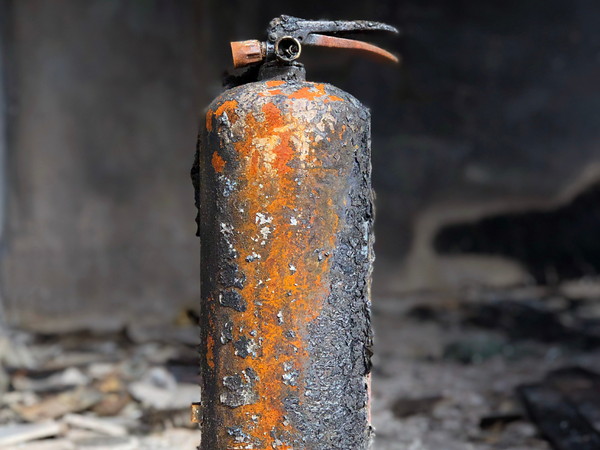
The national average cost of fire damage restoration in the US is $12,900. However, exact costs depend on the type and extent of the damage. The table below is based on data from Forbes.
Fire Damage Restoration and Cleanup Cost
The table below shows the highest, lowest, and average fire damage restoration costs in the US.
|
Lowest Cost |
$1,200 |
|
Average Cost |
$12,900 |
|
Highest Cost |
$72,300 |
Fire Damage Restoration Cost by Type of Damage
Fire damage restoration depends on the type of damage done by the fire. For starters, restoration experts often have to dry out the water used to put out the fire, clean ducts and vents, and remove soot. Here’s the average cost of each task based on the type of damage:
|
Type of Damage |
Average Cost |
|
Smoke Damage |
$200 to $900 |
|
Water Damage |
$1,000 to $4,600 |
|
Deodorizing Furniture |
$600 to $2,000 |
|
Duct Cleaning |
$200 to $500 |
|
Damaged Item Removal |
$55 to $80 per pound |
|
Soot Removal |
$1,400 to $4,700 |
|
Thermal Fogging |
$200 to $600 per floor |
|
Ozone Treatment |
$200 to $500 per floor |
Fire Damage Restoration Cost Per Square Foot
Here’s the average fire damage restoration cost per square foot:
|
House Size (Square Feet) |
Average Cost |
|
1,000 |
$4,250 to $6,000 |
|
1,750 |
$7,400 to $10,500 |
|
2,000 |
$8,500 to $12,000 |
|
2,500 |
$10,625 to $15,000 |
|
3,000 |
$12,750 to $18,000 |
|
3,500 |
$14,825 to $21,000 |
|
4,000+ |
$17,000 to $24,000+ |
Fire Damage Restoration by Fire Type
Many factors, including the fire class, play a role in the cost of fire damage restoration. Here are the costs based on the type of fire that occurred:
|
Type of Fire |
Cost |
|
Class A |
$8,600 to $13,600 |
|
Class B |
$13,100 to $19,100 |
|
Class C |
$11,100 to $21,700 |
|
Class D |
$15,600 to $24,800 |
|
Class K |
$11,600 to $18,200 |
Home Repair and Rebuilding Costs
After everything’s cleaned, some areas of your home might need to be repaired or rebuilt. Here are the costs depending on the area involved:
|
Type of Work |
Cost |
|
Kitchen Remodel |
$13,500 to $60,000 |
|
Roof Repair |
$400 to $1,400 |
|
Roof Replacement |
$2,500 to $5,400 |
|
Foundation Repairs |
$500 to $7,000 |
|
Electrical Repairs |
$900 to $3,000 |
|
Flooring Repair or Replacement |
$400 to $20,000 |
|
Insulation Replacement |
$2,100 to $6,700 |
|
Drywall Replacement |
$400 to $2,400 |
How Long Does It Take to Rebuild a House After a Fire?

Rebuilding a house after a fire takes several months to over a year, depending on many factors. Minor fire damage usually takes three to six months. This includes time for cleanup, repairs, and renovations. On the other hand, major impacts like structural damage or complete destruction can take a year or more.
You should also account for the insurance process. After a fire, you need to file claims and wait for an assessor, which can take weeks or even months. Securing funding and approvals from the insurance company can also take time and delay rebuilding.
Building permits matter as well. Depending on local regulations, you have to wait for weeks or months before starting construction. Your contractor’s availability also affects the timeline. Remember, finding one who can start immediately is tricky, especially if a natural disaster caused the fire.
Conclusion
Fire damage restoration might seem overwhelming, but it doesn’t have to be. Take it step by step—prioritize your safety, evaluate the damage, and ask for help if needed. Whether you’re dealing with complete destruction or minor damage, having a clear plan makes all the difference. At the end of the day, it’s all about turning a tough situation into a fresh start. You got this!
Before you go, remember that prevention is always better than cure. You need reliable, easy-to-use, and affordable tools to help prevent fires and save you the trauma and high cost of fire damage restoration. Check out Prepared Hero’s fire prevention tools here, and get up to 51% off on certain items. Stay prepared, hero!


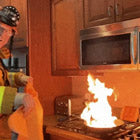 Fire
Fire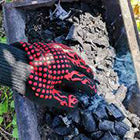 Safety
Safety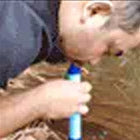 Survival
Survival Protection
Protection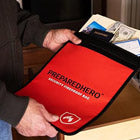 New
New
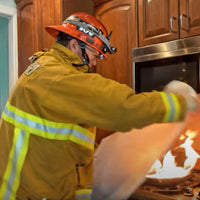 Fire
Fire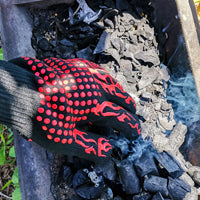 Safety
Safety Survival
Survival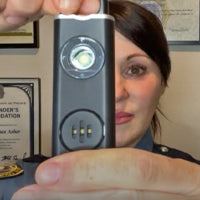 Protection
Protection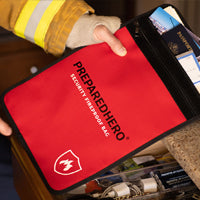 New
New
